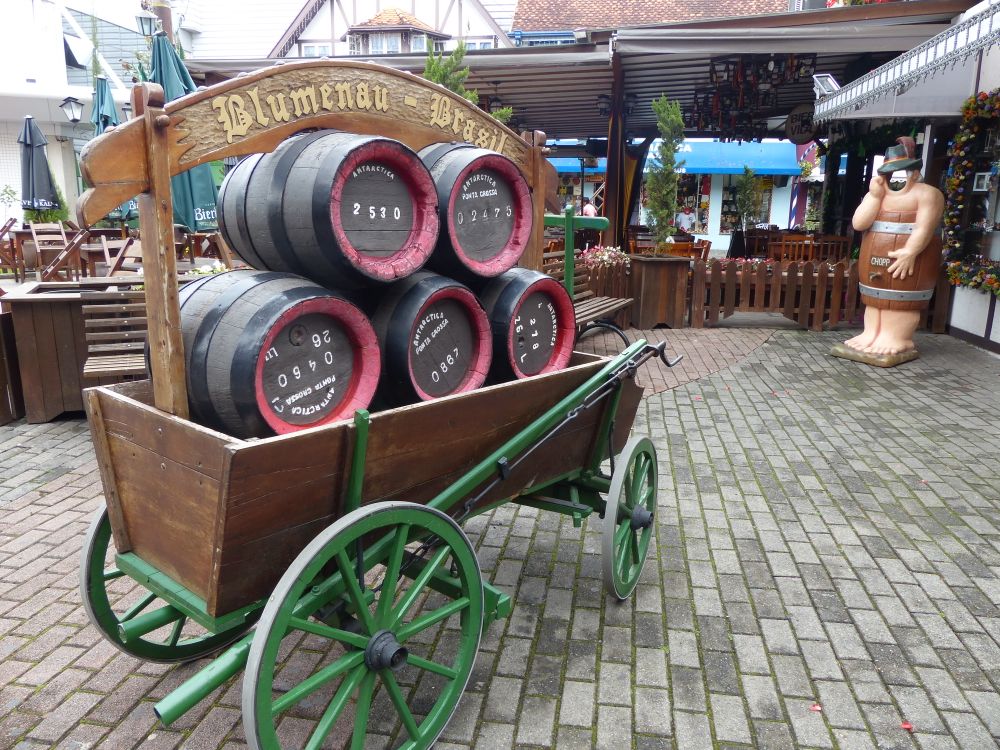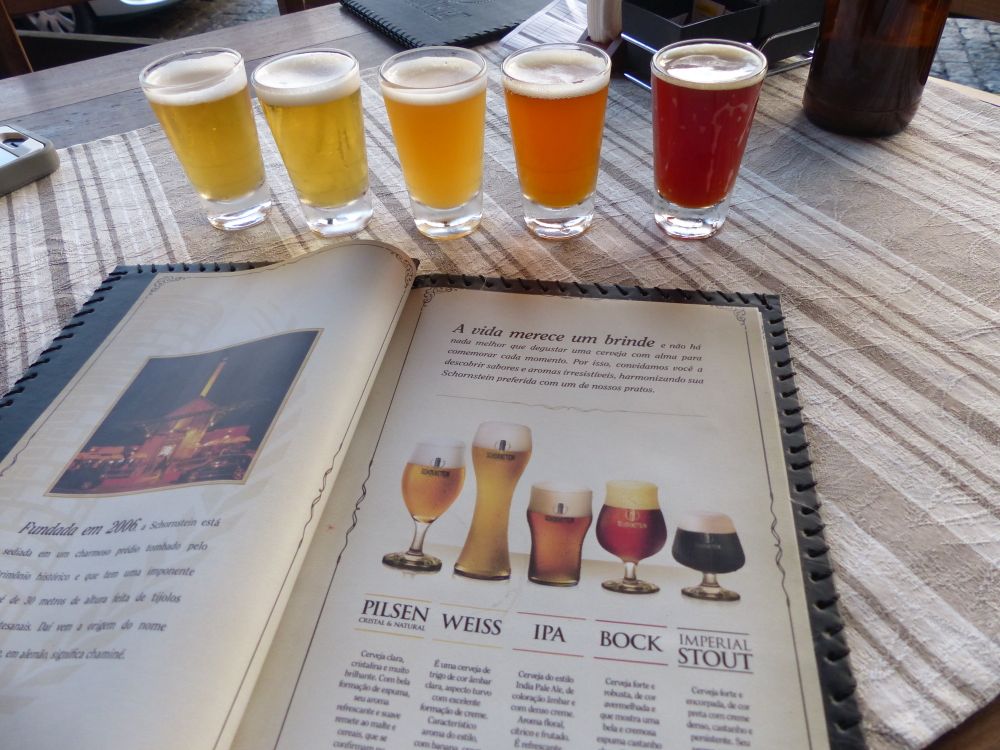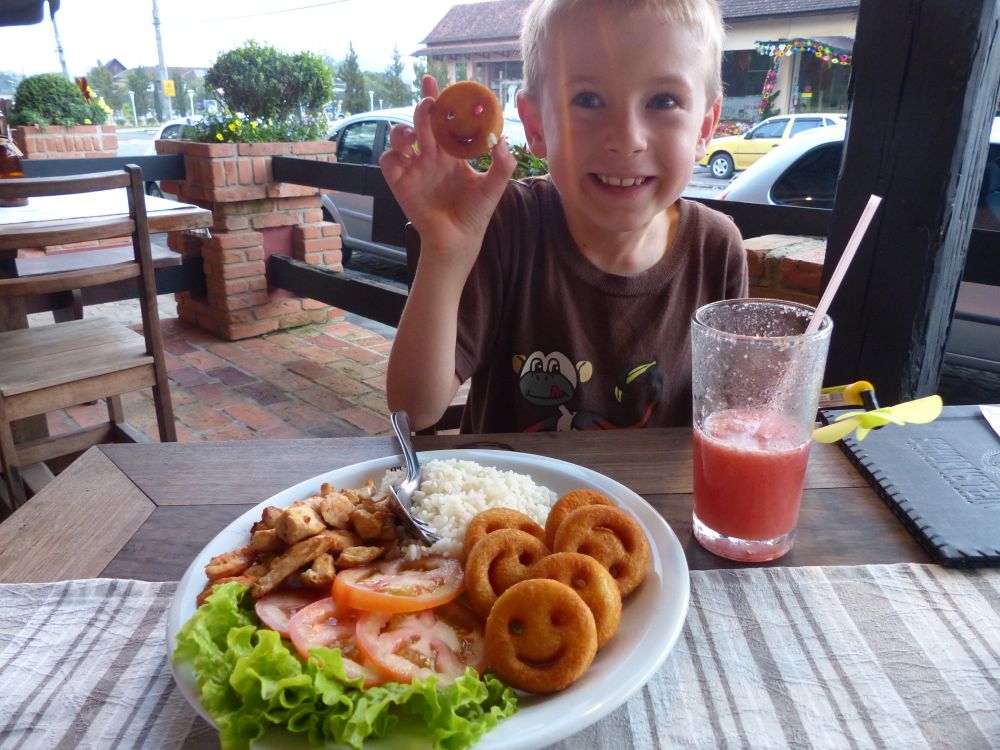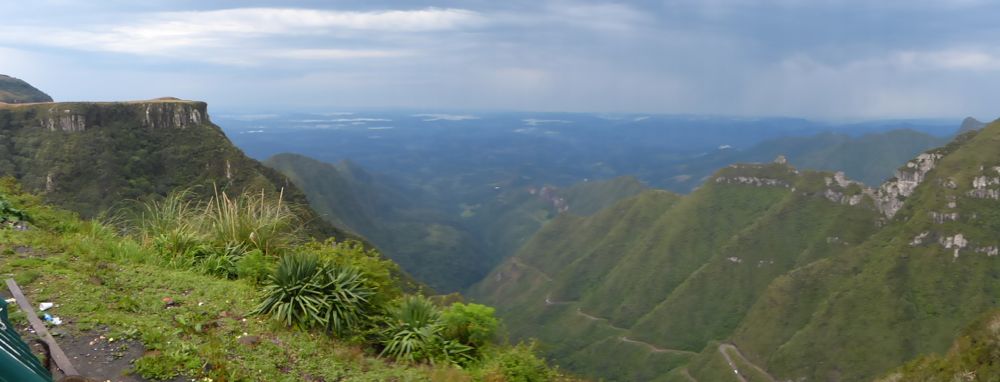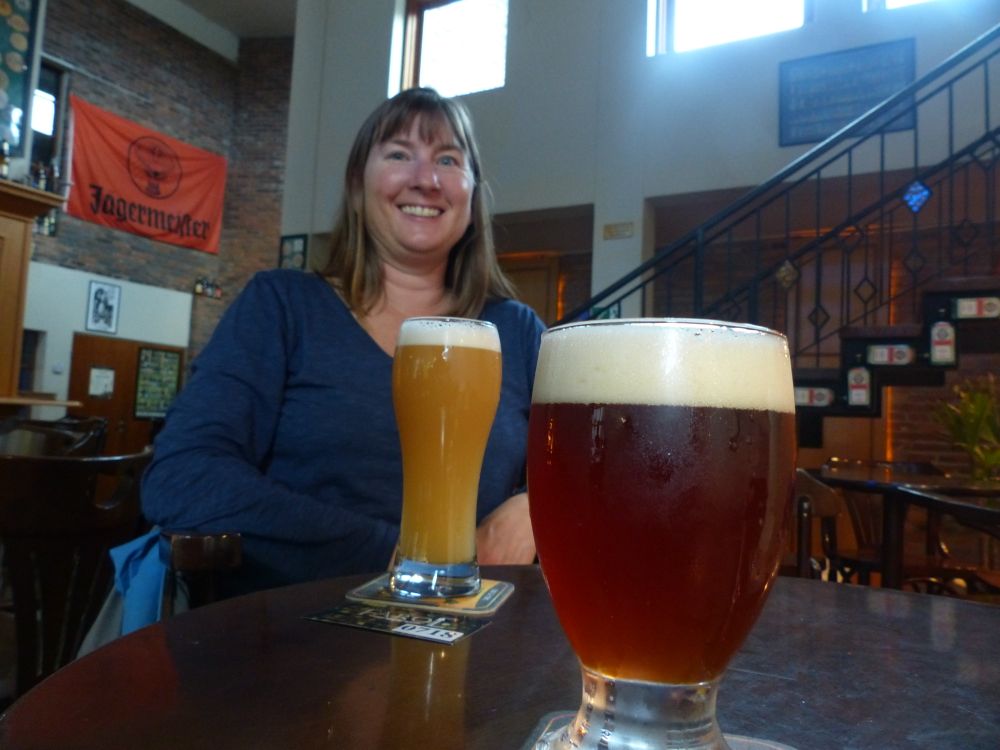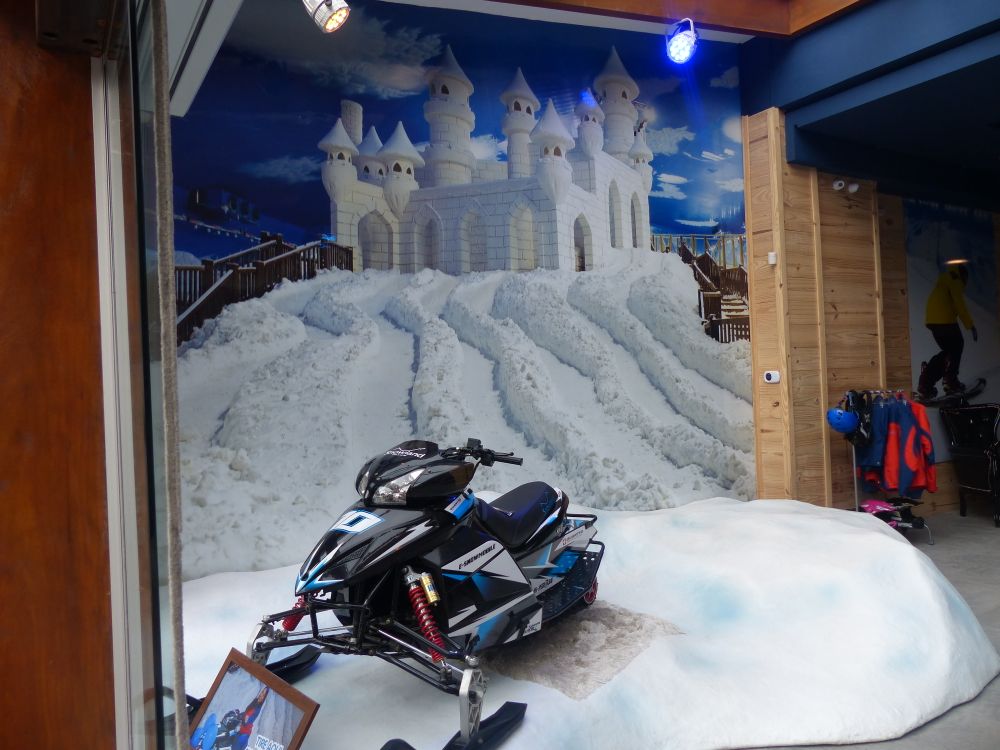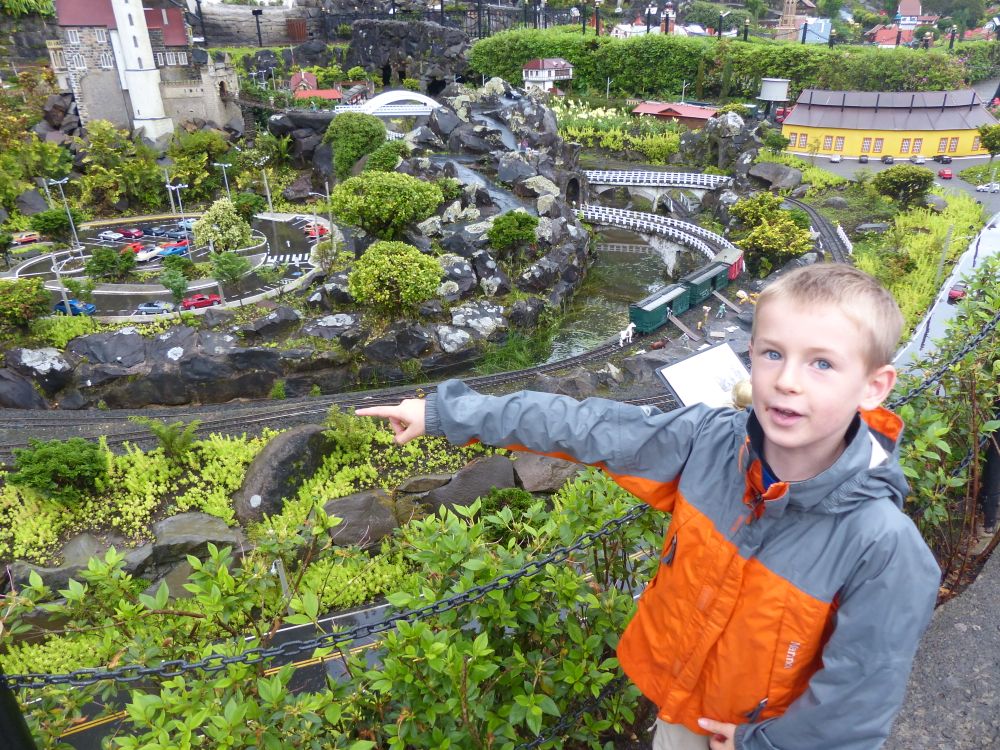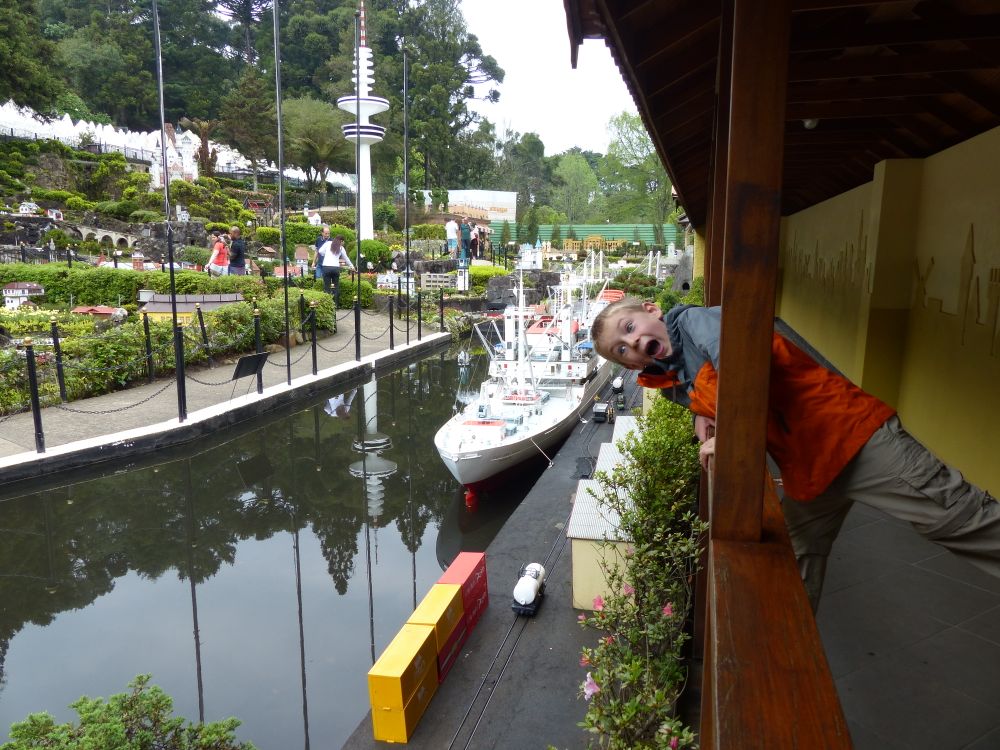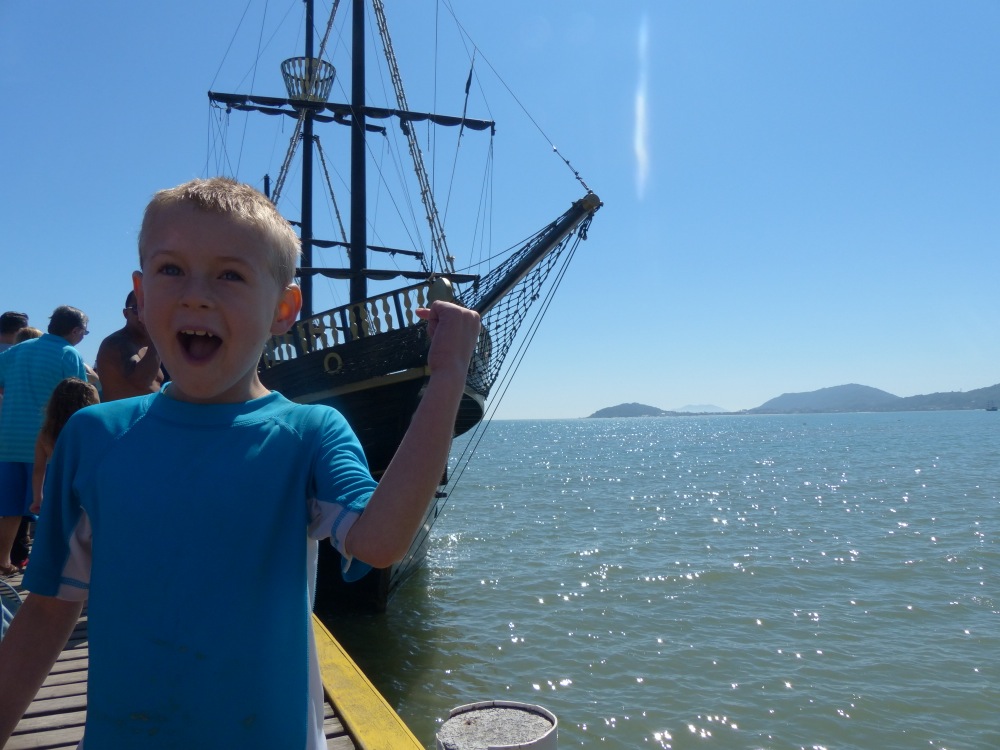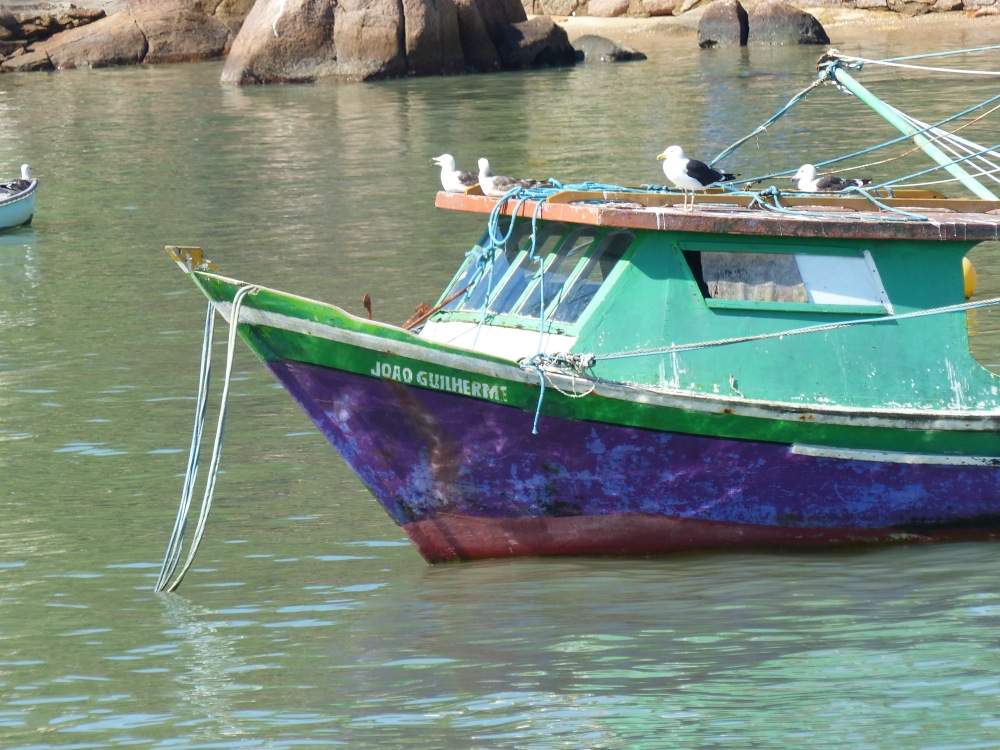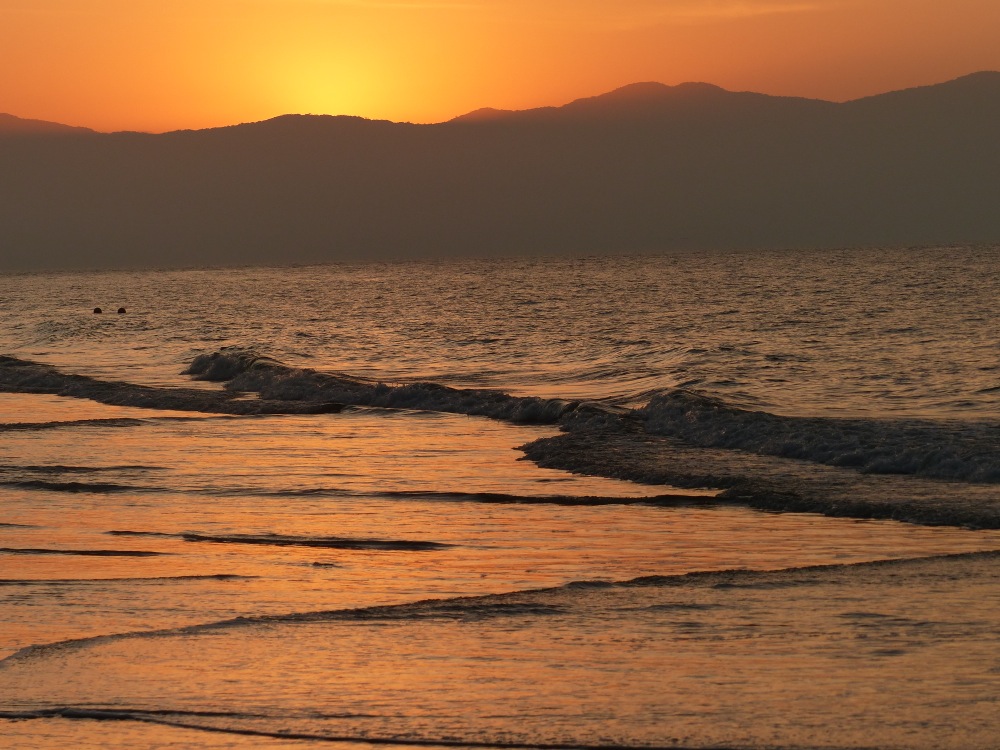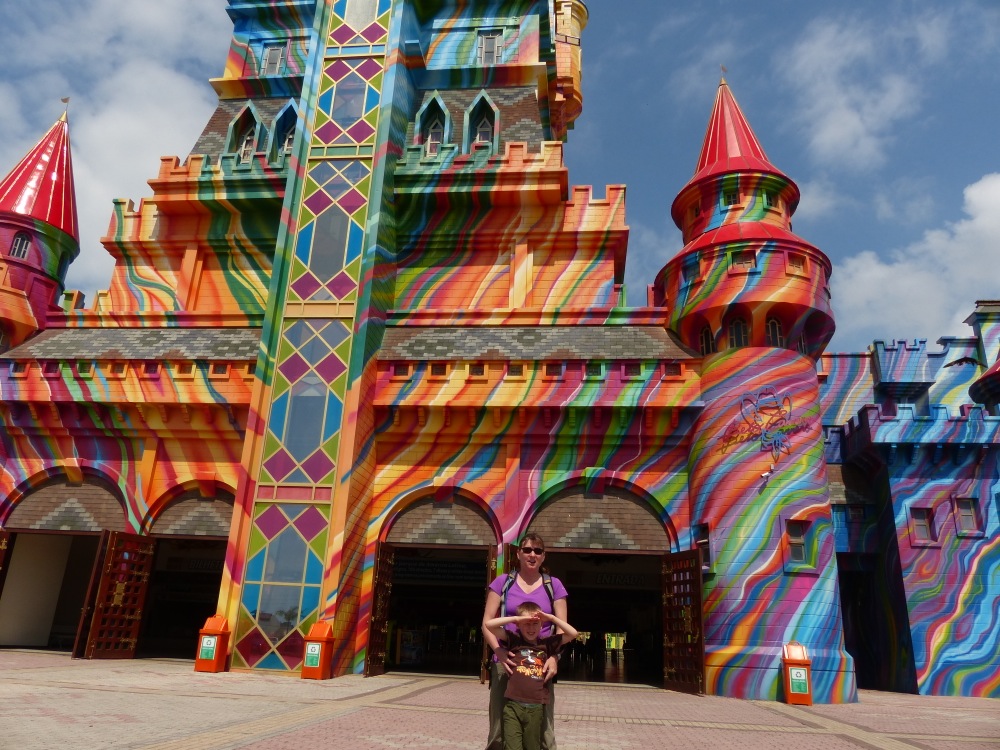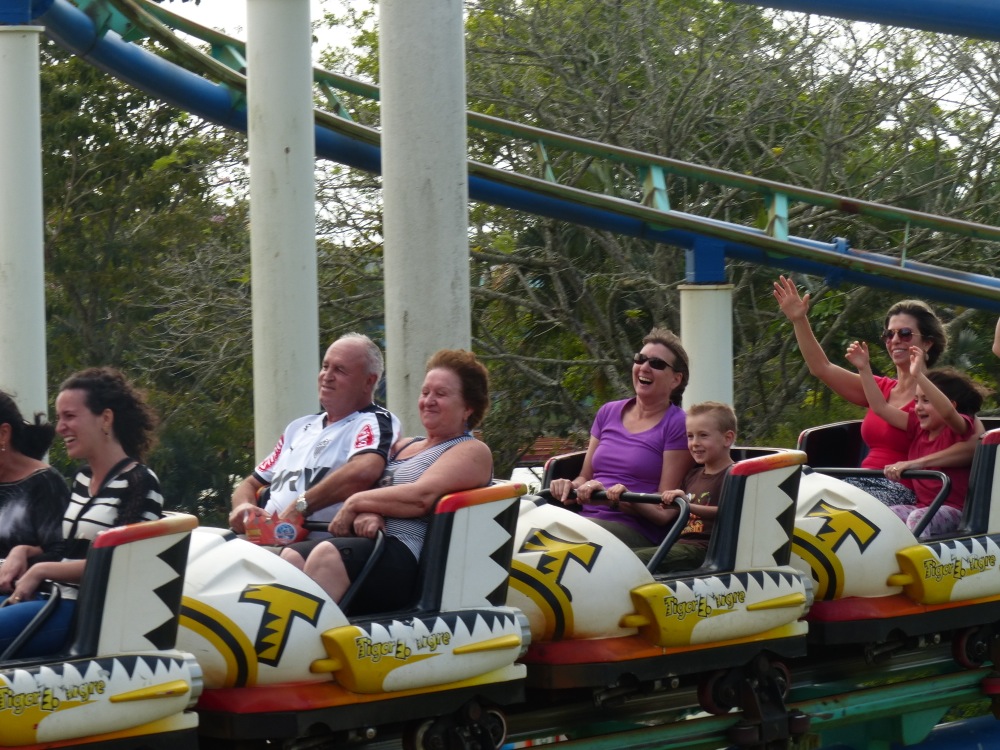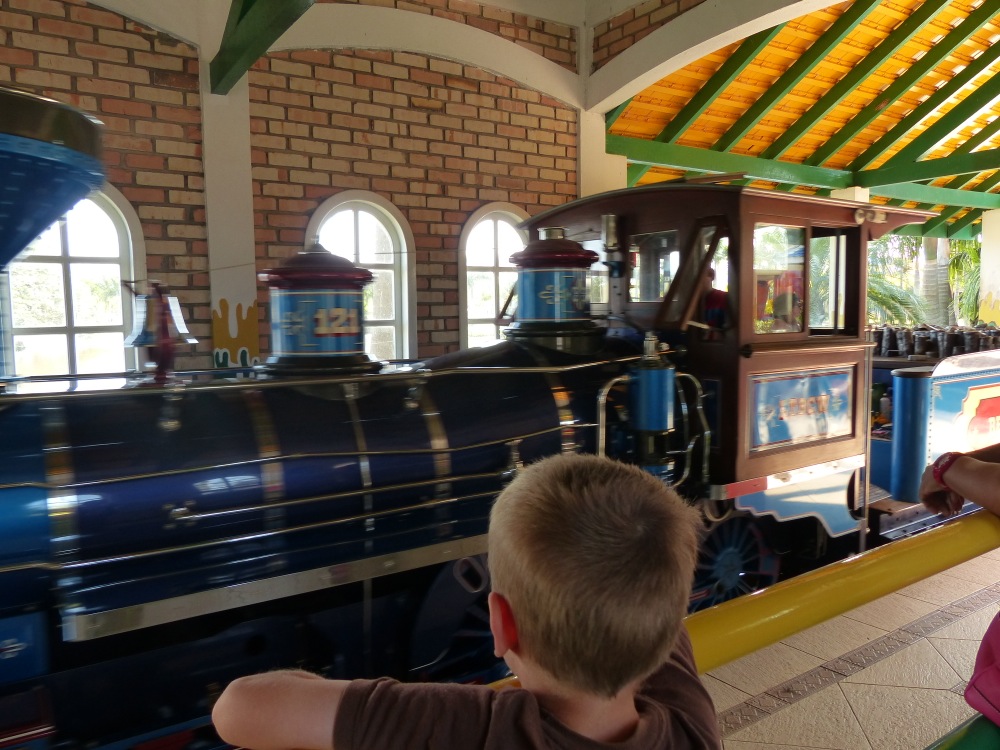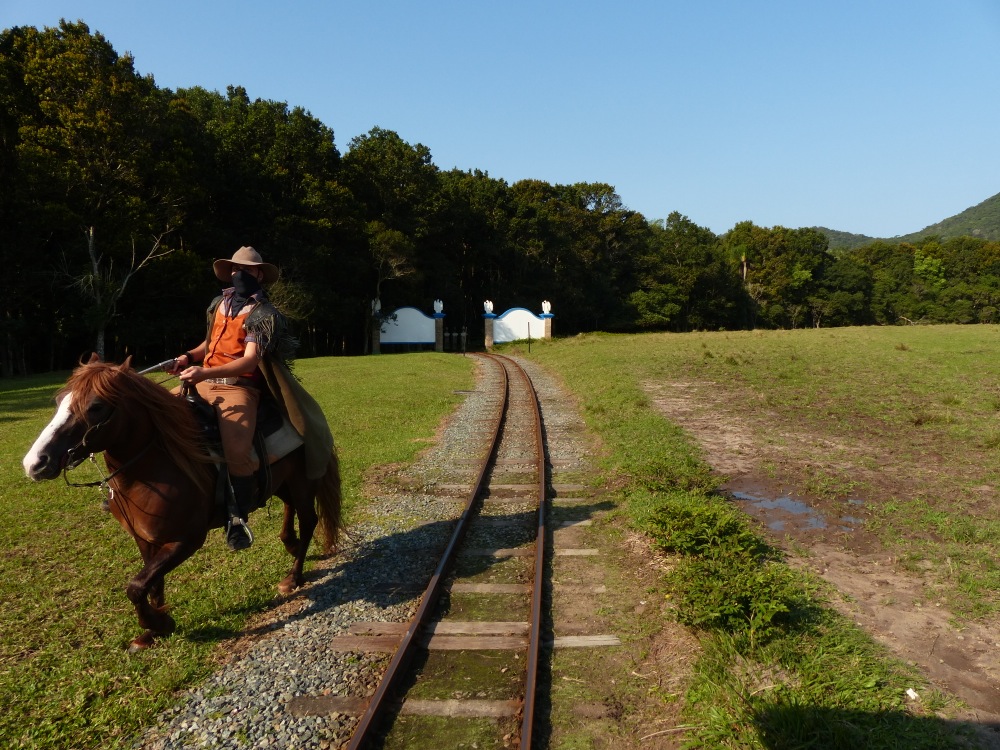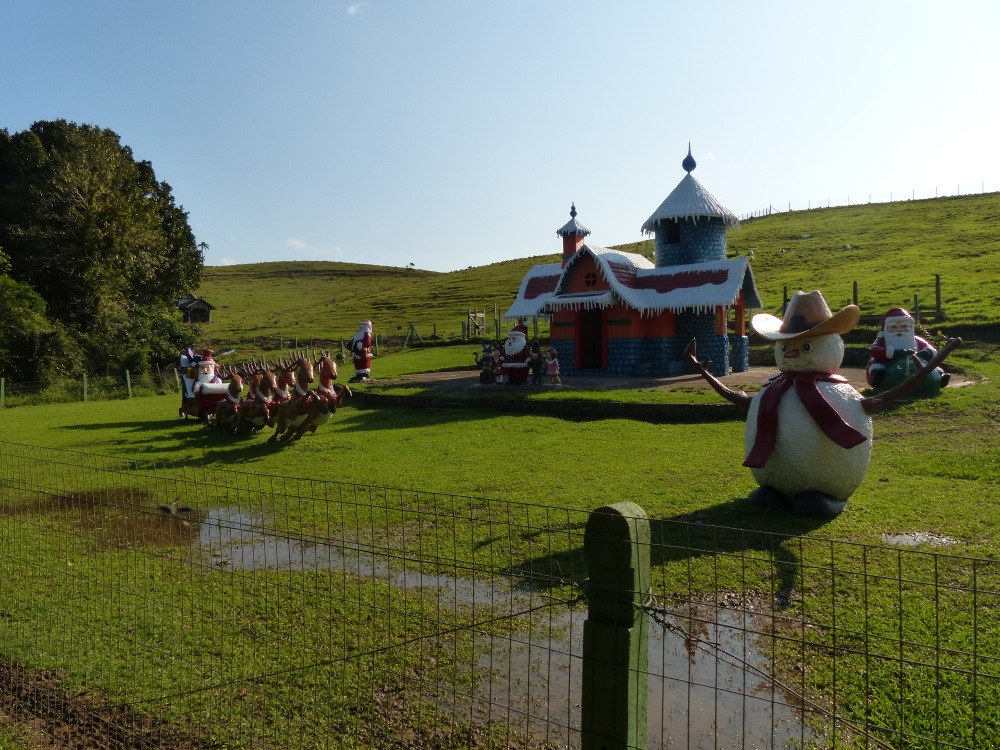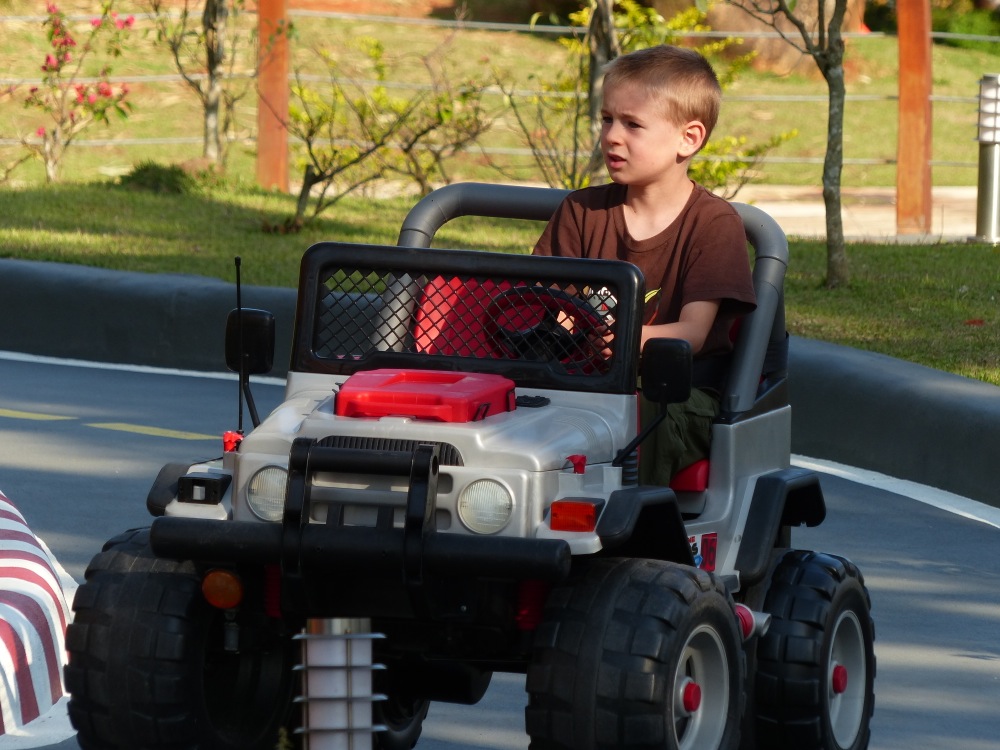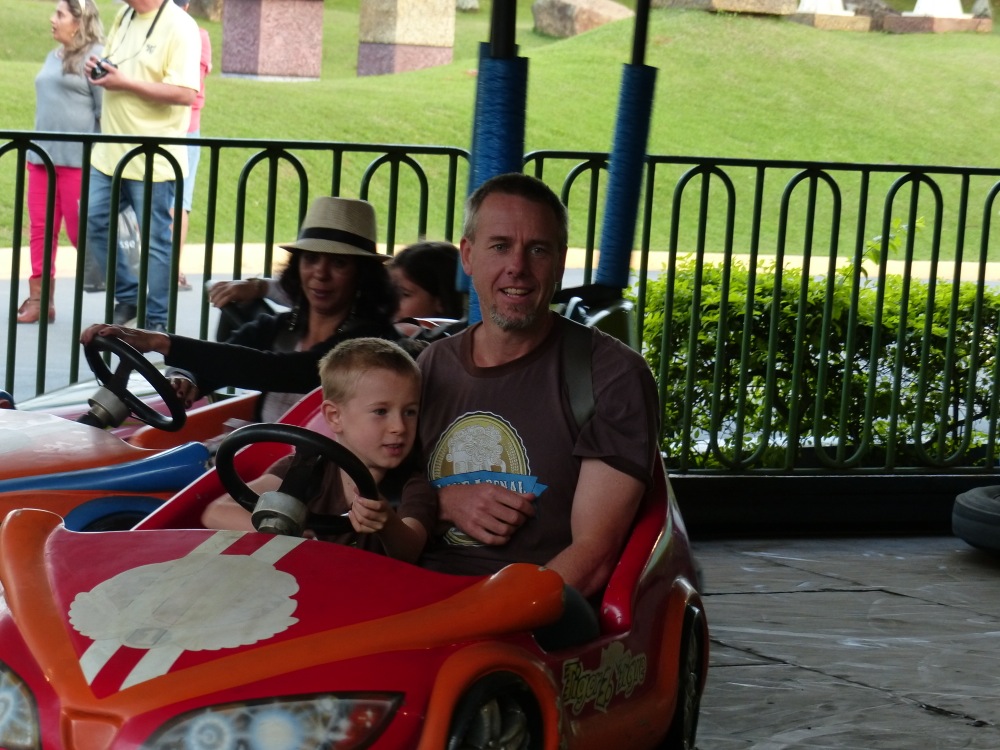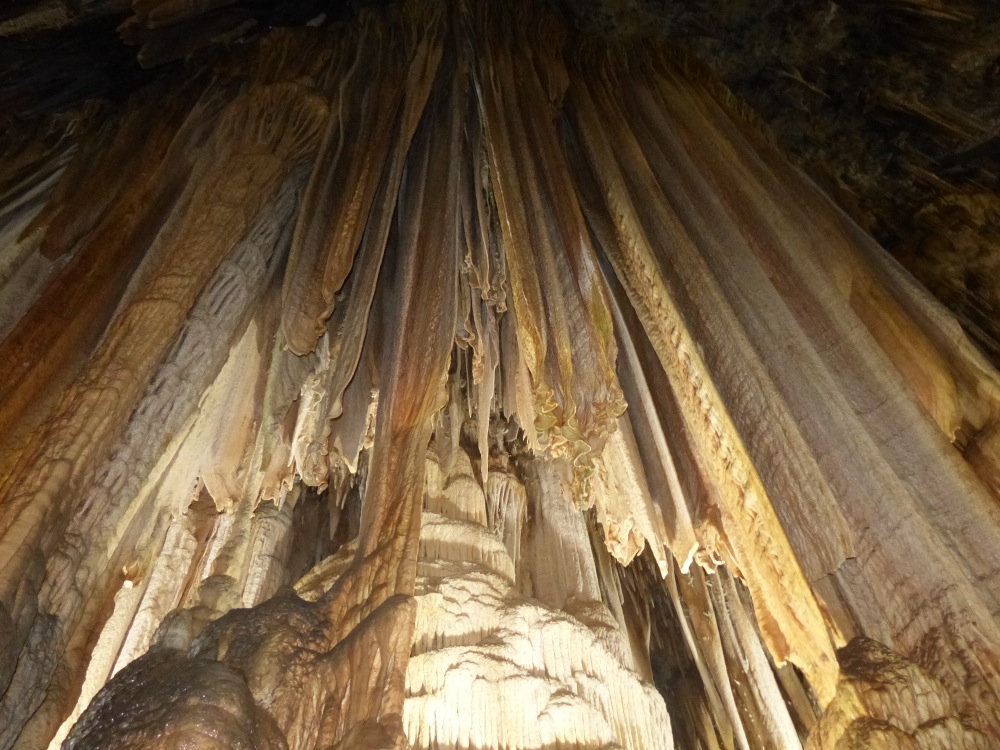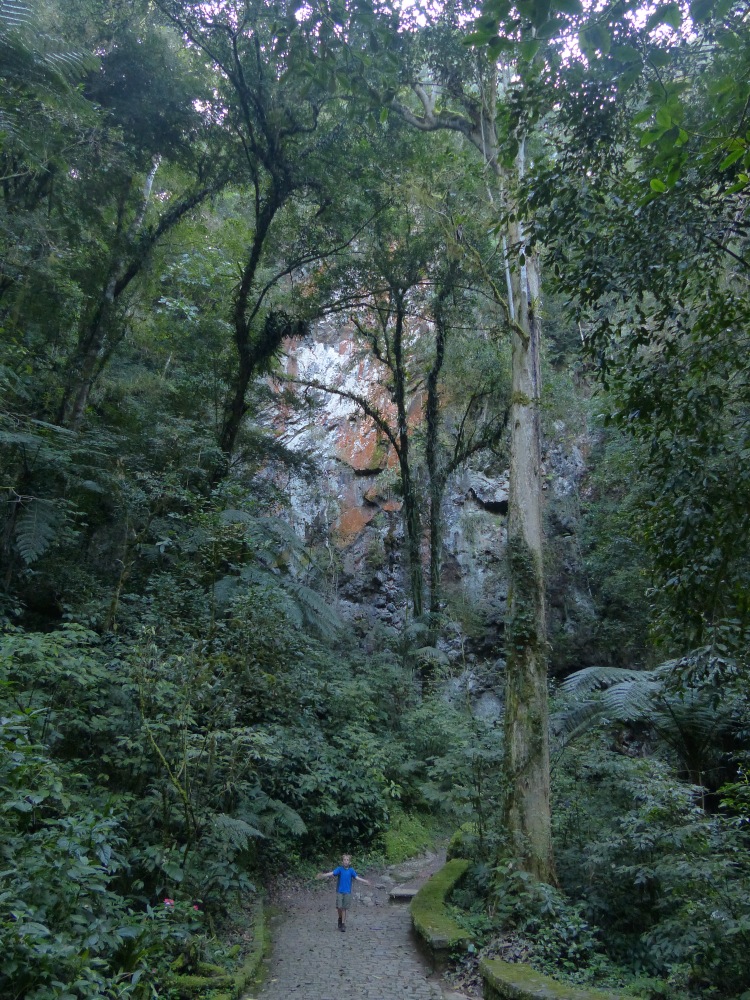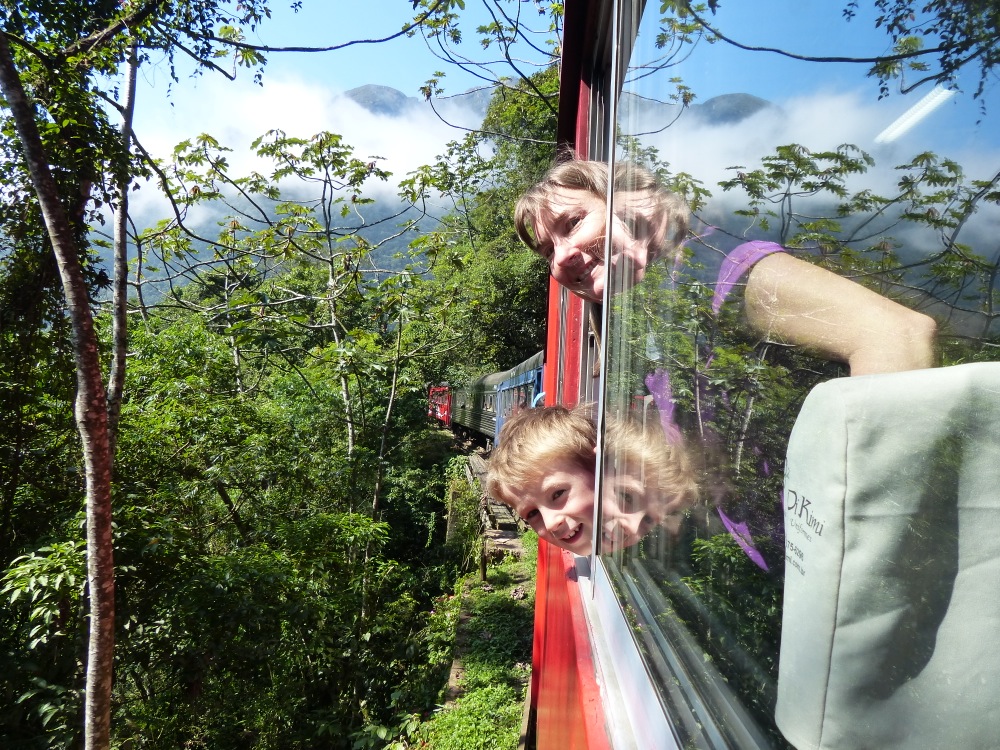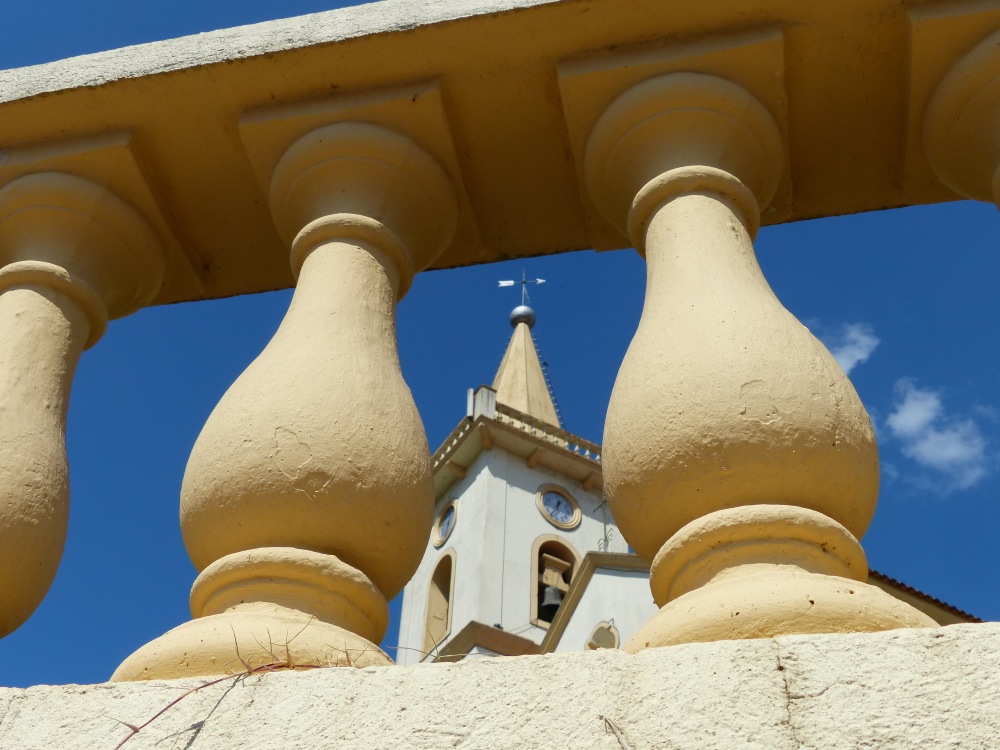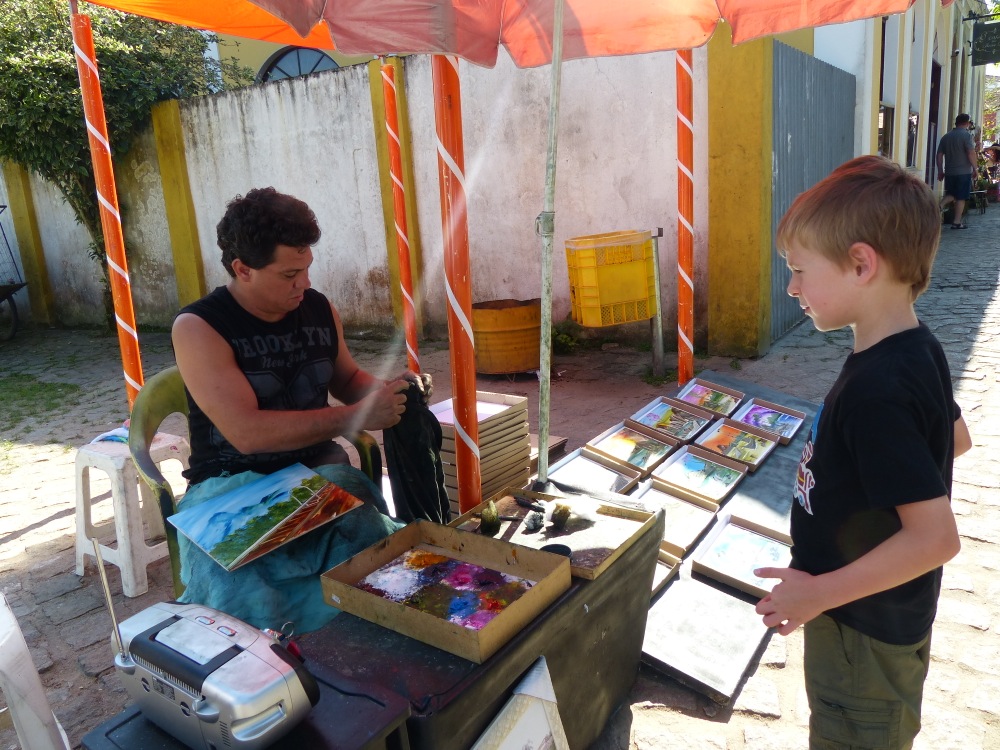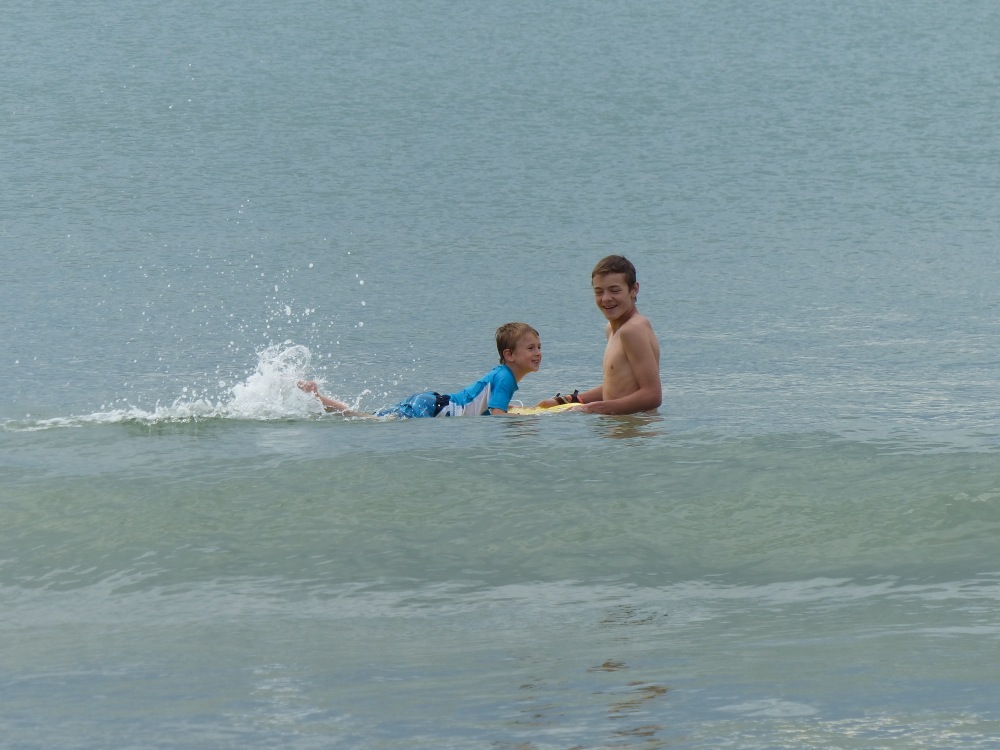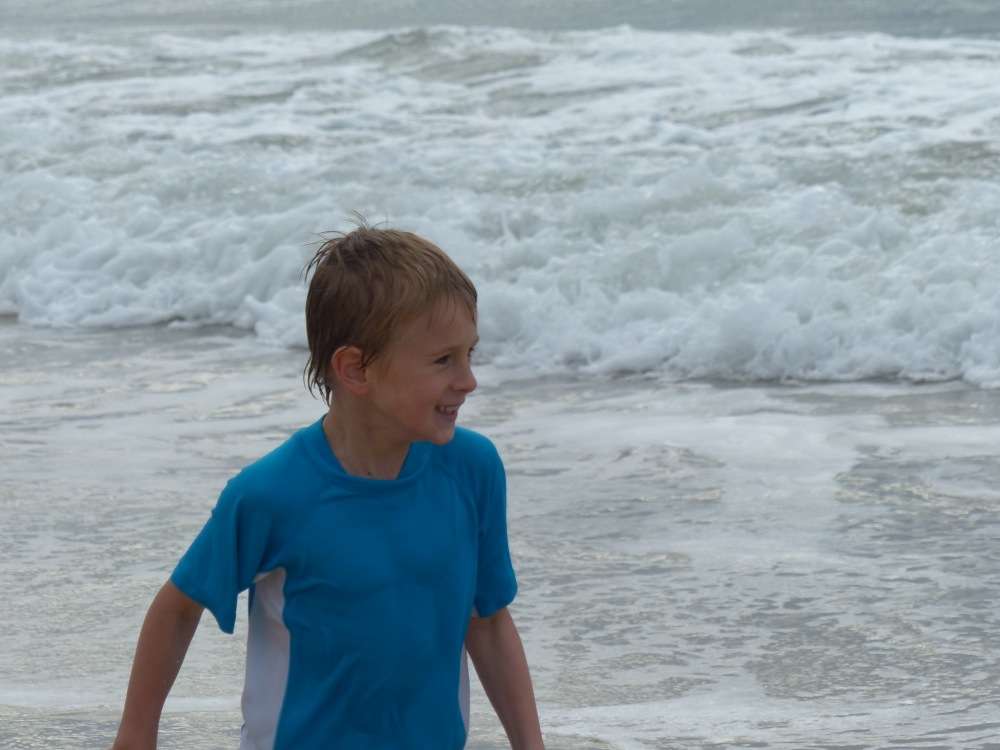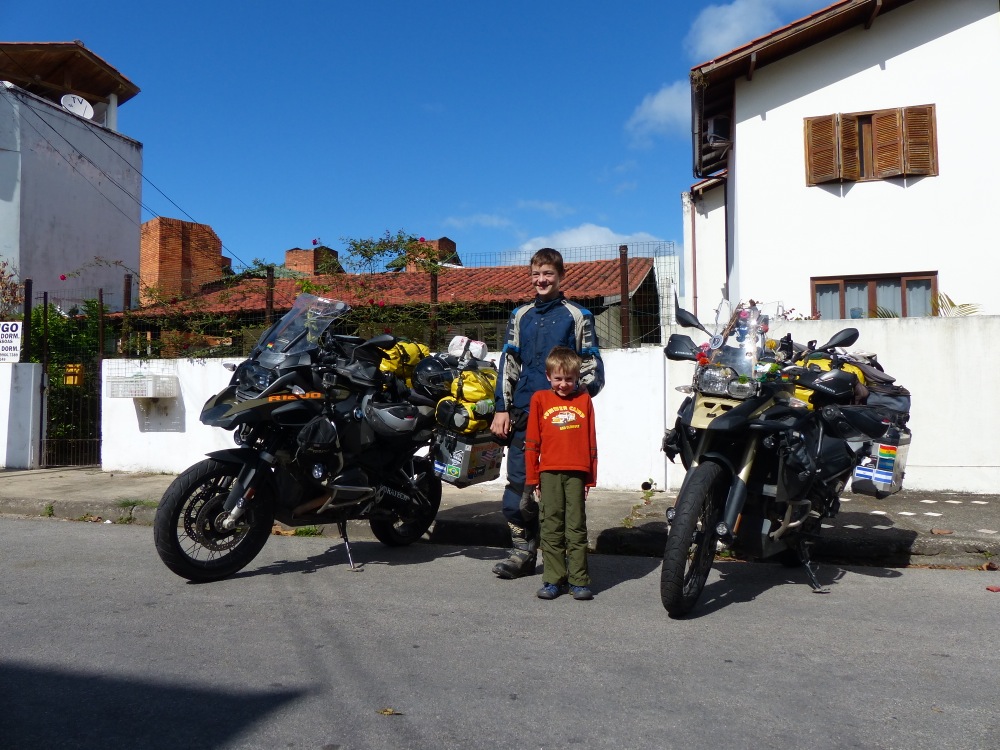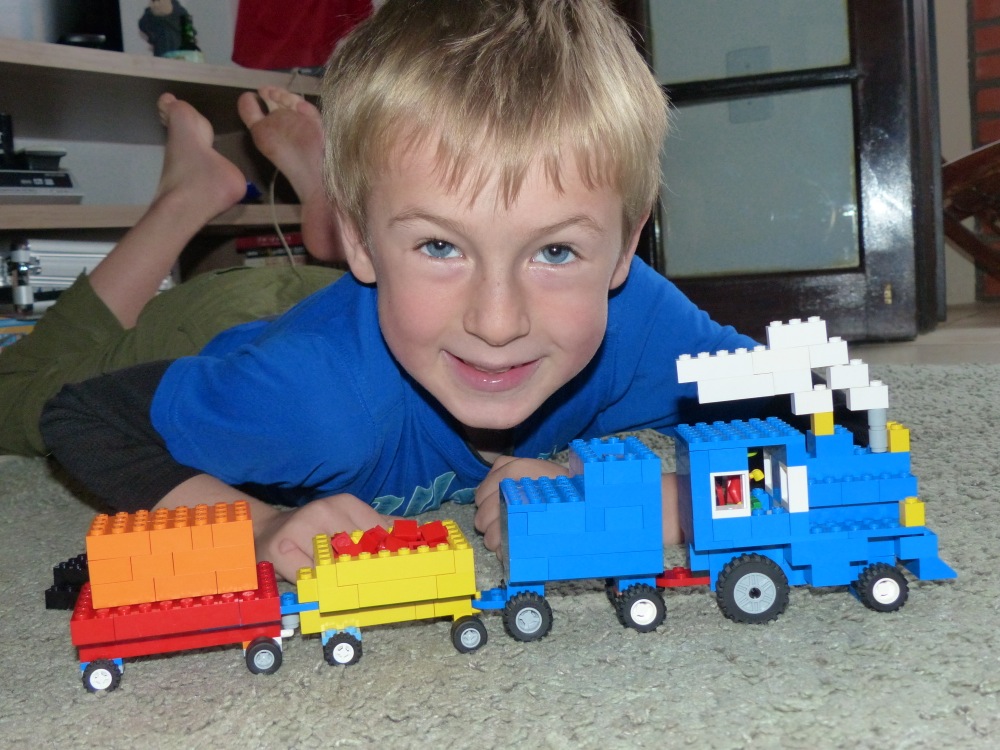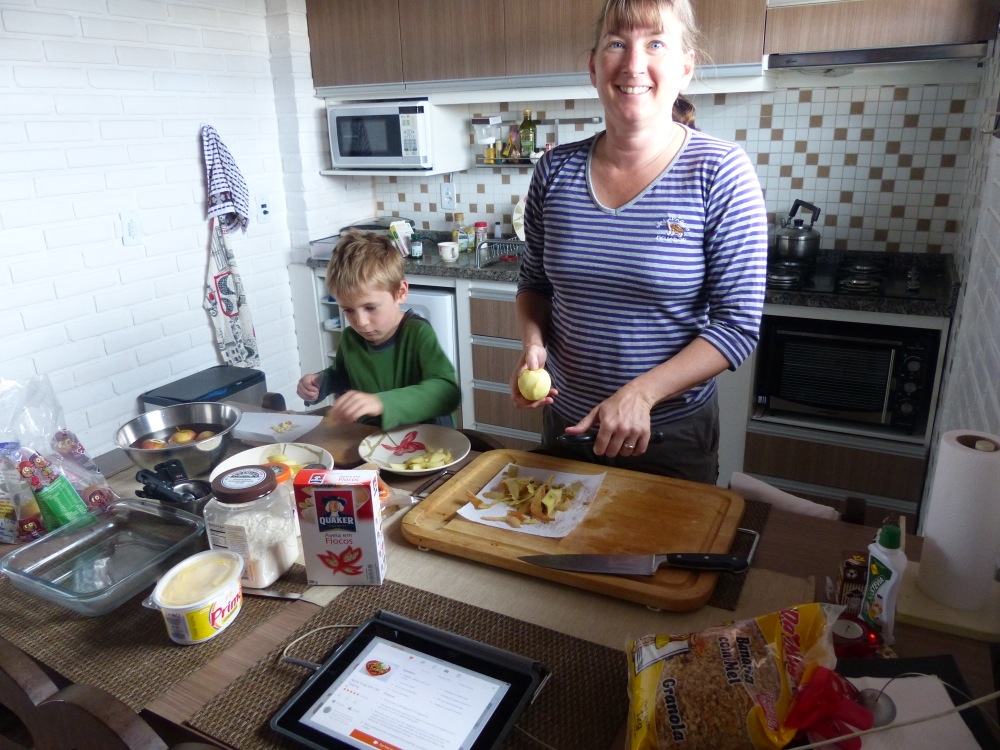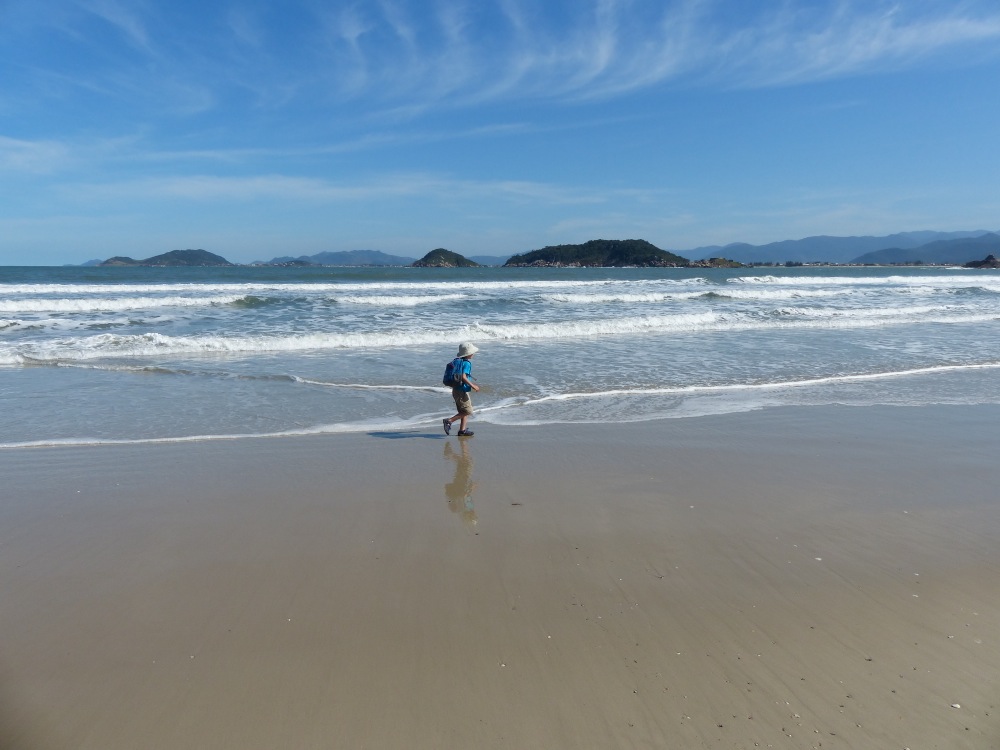Since arriving in Mexico back in December of 2013, our Spanish has gotten to the point of being half-decent. When we entered Brazil in July, it was a whole different ball game – Portuguese! Learning Portuguese has been really difficult for us. Jen made a great effort using Duolingo to try to learn the language, and picked up some great tips that were very helpful. I on the other hand learned to say, “Sorry, I don’t speak Portuguese. Do you speak English or Spanish?” Then, regardless of their reply, I’d start yammering to them in Spanish. Mostly it worked out.
When seen in print, Portuguese looks a lot like Spanish, so reading it isn’t too bad. But when you hear someone speak it, you realize that the rules for pronunciation are completely different. I’ve heard people say it sounds like everything from Russian to Dutch to Chinese. For a simple example, take the Brazilian currency, the Real. Okay, it’s obviously not pronounced “reel” – any self-respecting citizen of the Western United States knows that. Okay, so give it a nice Spanish sound, and roll the R a bit – “ray-al.” That sounds better. Now surely I sound like a local! Nope. First off, most (but not all) Rs in Portuguese are pronounced like an “h.” So “Real” ends out sounding like “hay-awl.” Just about everything in the language is like that. But thankfully the locals were very accommodating and treated our attempts at their language with grace and humor.
Speaking of the Real, it’s been sinking against the dollar ever since we arrived. Back in July the exchange rate was 3.2 Reais (try pronouncing that) to the Dollar; by the time we left it was around 4. This has made our stay in Brazil much less expensive for us than we had anticipated, but it’s very hard on the locals who are seeing prices go up for anything imported. This is largely because no one has any confidence in the current government (the president currently has a whopping 8% approval rating, and according to Brazilians those 8% are all benefiting from the rampant corruption). Brazil’s foreign credit rating has recently been downgraded, and that combined with the strength of the Dollar of late has made things tough on the unpronounceable Real.
It’s been about 10 days since we left Florianopolis, and we’ve packed a lot in to that time! Our first stop was in the Vale Europa, the region of Brazil that is home to a large population of German and Swiss immigrants. This area was somewhat isolated until recently, and the immigrants’ home languages and customs have survived to make it an attractive tourist destination.
From Blumenau we drove South to the mountain town of Urubici. There was a lot of rain while we were there, and we spent a couple of afternoons in their visitor center, which inexplicably contained a room with a giant set of kids’ construction materials.
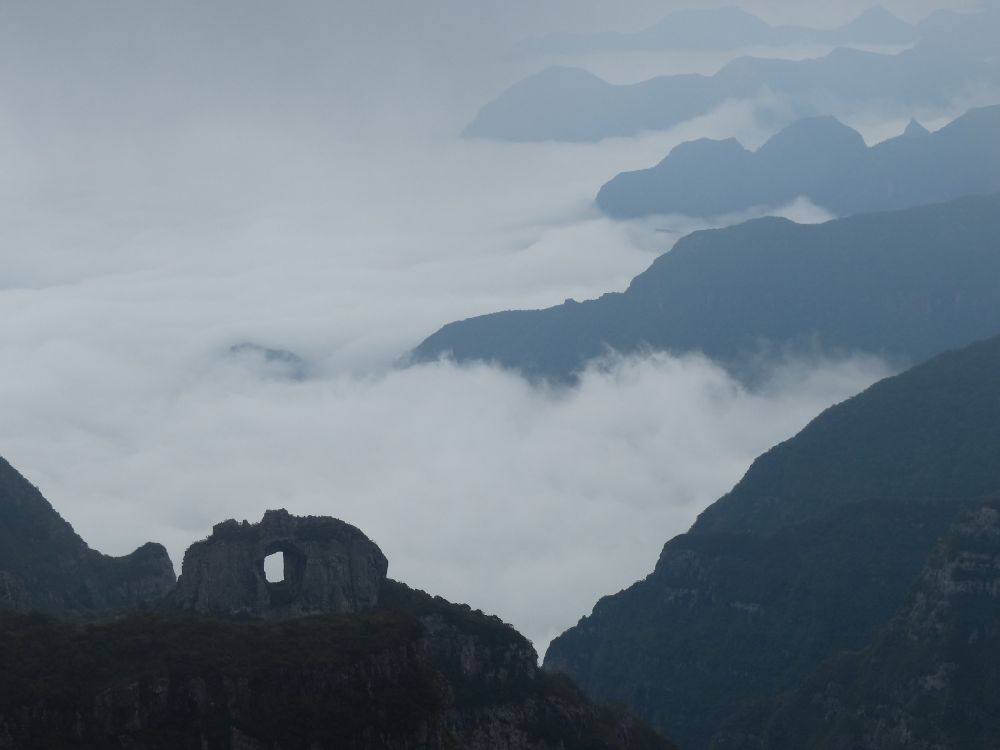
This overlook is near the highest point in Brazil. It was foggy and overcast, but beautiful nonetheless.
From Urubici we planned to head South toward Gramado, which we’ve been told by many travelers is a must see stop. First, though, and despite the rain, we decided to take a 4WD track through São Joaquim National Park that had been recommended to us by Rob and Grace (Challenging Your Dreams). The road took us through a very remote and beautiful area, and despite the mud and slow going, we enjoyed the detour.
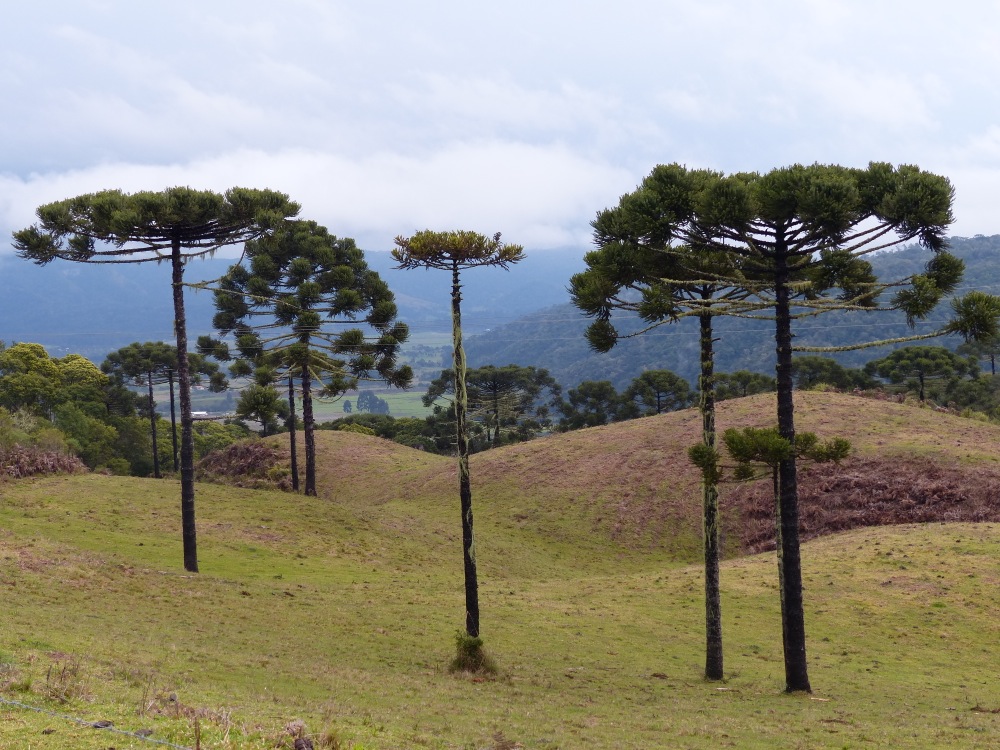
The region had a lot of these strange, but beautiful looking trees. We’re not sure what they’re called; we call them Pom-pom pines.

The track featured several bridges where Jen had to get out and make sure our wheels didn’t drop into the holes in the decking.
After regaining the pavement, we headed back down to the coast to spend the night. It being winter, the beach towns are deserted, so we camped in an empty beach-front parking lot.
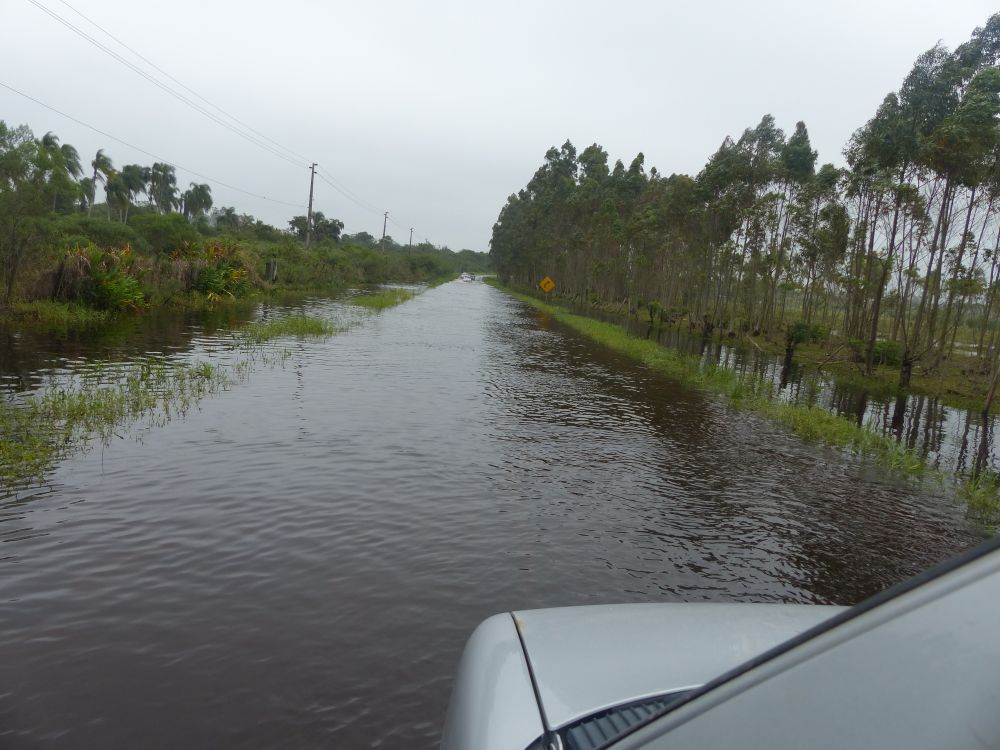
The next day we had to cross a short section of flooded-out road on our way up to Gramado from the coast.
Our next stops were the neighboring towns of Gramado and Canela, which are popular tourist destinations for Brazilians and have lots of fun stuff to do. Descendants of immigrants from Italy, Switzerland and Germany have settled in this region and their cultural influence is apparent. We spent three days there, and even managed to squeeze in a brewery visit in between alpine slides and train museums.
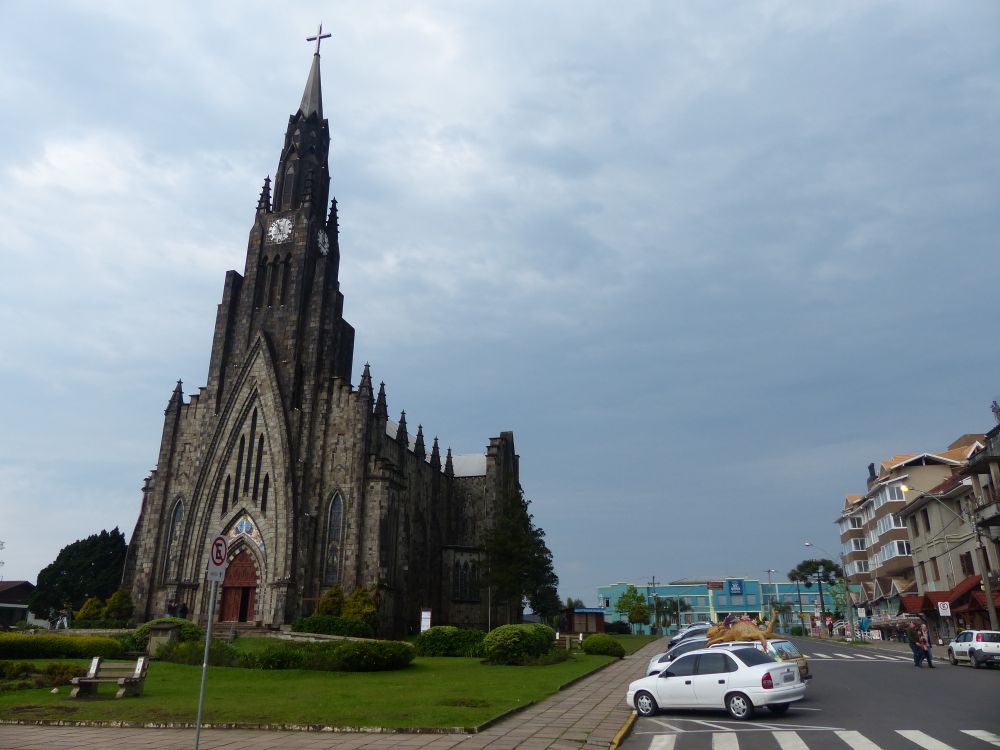
The churches in this area are decidedly more Northern European than the Spanish influenced architecture we’ve come to expect.
The ‘World of Steam’ (Mundo A Vapor) museum was created by a man who built model steam engines of all types as a hobby. Today his creations are open to the public. He has working steam powered models of various industries including a paper mill and saw mill.
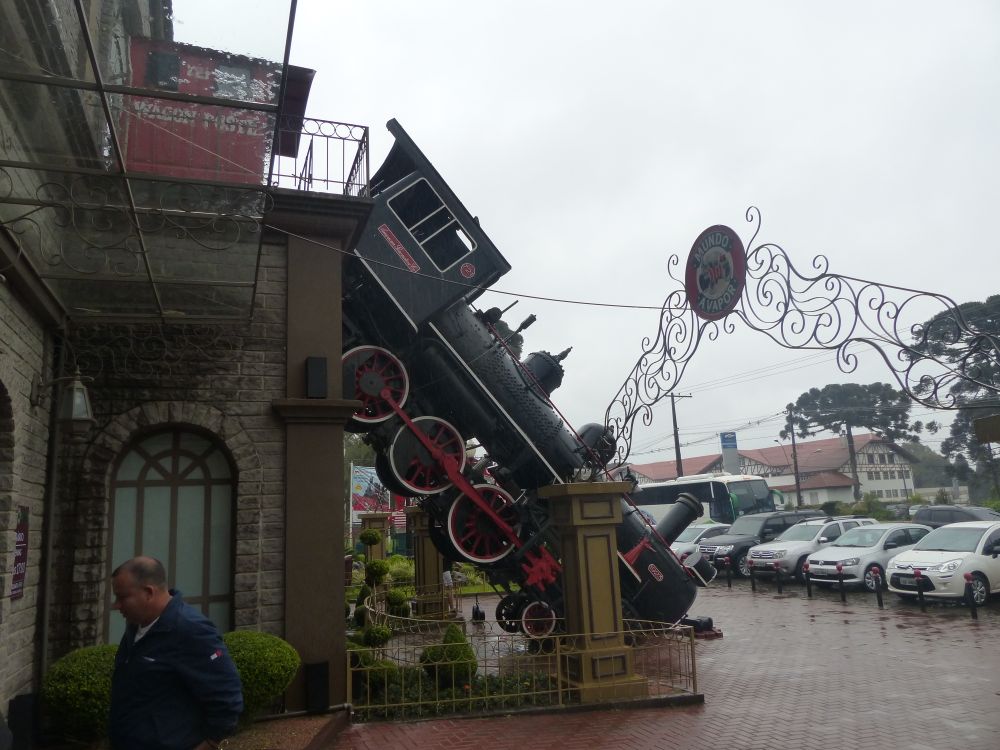
The front of the steam museum is a re-creation of a famous train accident that occurred in Paris in 1895.
This area of Brazil occasionally gets snow, and Brazilians take a break from the beach to come see it. But just in case you miss the one or two snowfalls per year, there’s a museum where you can play in artificial snow and places to get your picture taken with a snowy background.
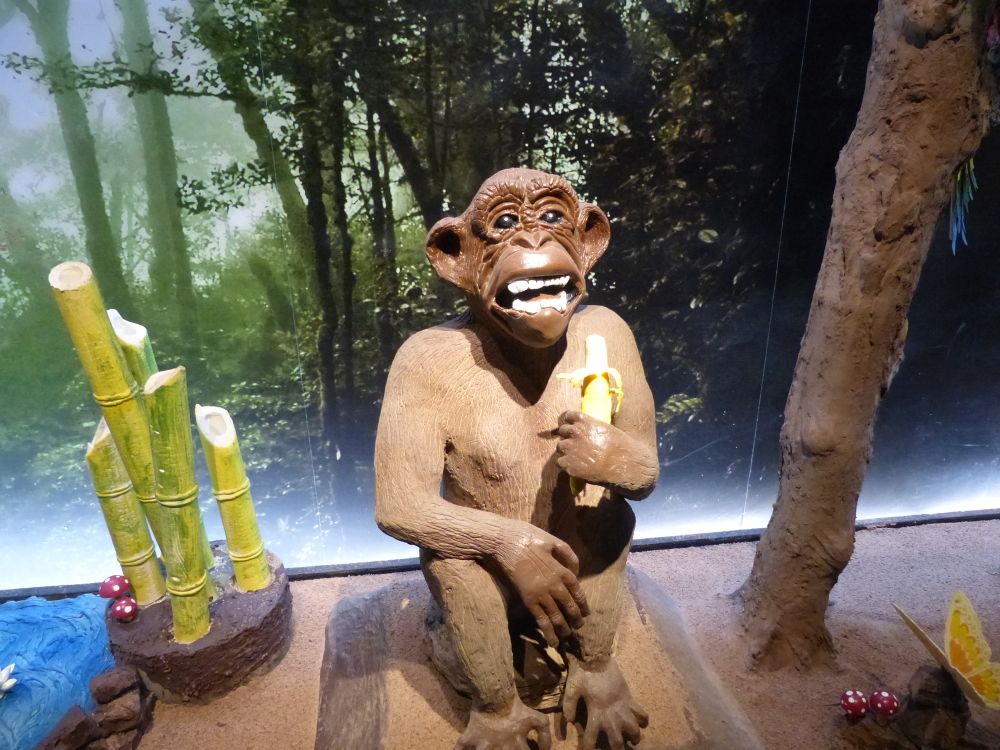
We visited ‘Chocolate World’ (Mundo Chocolate) which housed this monkey, an Eiffel Tower, and all kinds of other stuff made entirely from chocolate.
As we were leaving town, we noticed a sign for “Mini Mundo” (Miniature World). We’d seen pamphlets for it in the tourist information offices, and it looked pretty cool. We asked Quinn, and he said he’d like to go. It turned out to be the best attraction in town. Started by a German immigrant and his family and built up over the years, the fourth generation is now working on this amazing 1/24 scale replica that features models of various towns and buildings in both Europe and Brazil. It of course had railroads running through it, which was the highlight for Quinn.


